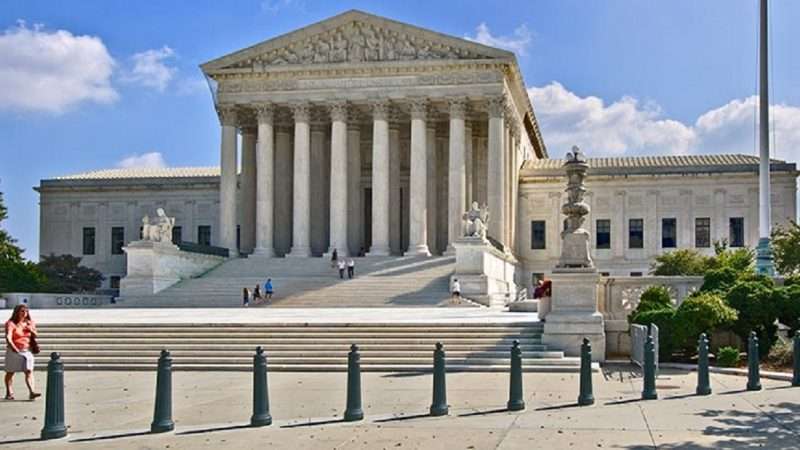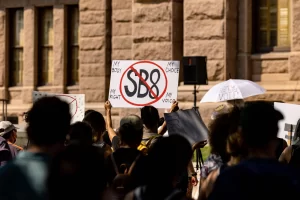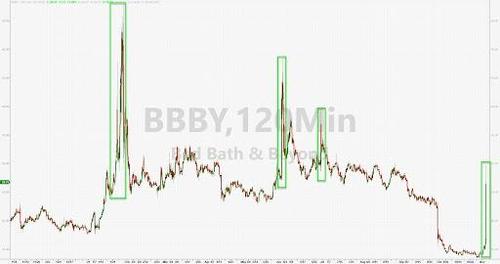With the geocentric model, the earth is at the center of the universe, and the planets rotate around the earth. But from the outset, this model was flawed. Astronomers observed that the planets do not move across the sky in a straight fashion, as would be expected if the earth was stationary. Rather, the planets moved forward, and then backward. How could this retrograde motion be explained? Defenders of the geocentric model conceived of the so-called epicycles. In fact, the planets that orbited the earth also orbited within a small circle. This orbit-within-an-orbit explained the retrograde motion of planets. But why would the planets orbit within the epicycle? Who cares! The elites found a way to defend the geocentric model of the universe. And the geocentric model of the universe is dogma.
The geocentric model of the universe is a good analogy for Roe v. Wade. From its birth, the case had no grounding in the Constitution. None. And that flaw was patent to everyone. But in order to defend this new-found right, the Supreme Court had to distort countless other areas of the law. Justice O’Connor’s observation in Thornburg v. ACOG was prescient: “no legal rule or doctrine is safe from ad hoc nullification by this Court when an occasion for its application arises in a case involving state regulation of abortion.”
Five decades later, we are stuck spinning in a never-ending series of epicycles. Consider a few examples of how Roe has distorted our law:
- Stare Decisis: “The Court’s reliance upon stare decisis can best be described as contrived. It insists upon the necessity of adhering not to all of Roe, but only to what it calls the ‘central holding.’ It seems to me that stare decisis ought to be applied even to the doctrine of stare decisis, and I confess never to have heard of this new, keep-what-you-want-and-throw-away-the-rest version.” Planned Parenthood of Se. Pennsylvania v. Casey, 505 U.S. 833, 993 (1992) (Scalia, J.).
- Freedom of Speech: “Today the ad hoc nullification machine claims its latest, greatest, and most surprising victim: the First Amendment. Madsen v. Women’s Health Ctr., Inc., 512 U.S. 753, 785 (1994) (Scalia, J., dissenting).
- Freedom of Speech: “What is before us, after all, is a speech regulation directed against the opponents of abortion, and it therefore enjoys the benefit of the ‘ad hoc nullification machine’ that the Court has set in motion to push aside whatever doctrines of constitutional law stand in the way of that highly favored practice.” Hill v. Colorado, 530 U.S. 703, 741 (2000) (Scalia, J., dissenting).
- Facial Challenges: “In fact, it is not clear that any woman would be deprived of a safe abortion by her inability to obtain a partial birth abortion. More medically sophisticated minds than ours have searched and failed to identify a single circumstance (let alone a large fraction) in which partial birth abortion is required. But no matter. The ‘ad hoc nullification’ machine is back at full throttle.” Stenberg v. Carhart, 530 U.S. 914, 1020, (2000) (Scalia, J., dissenting).
- Tiers of Scrutiny: “These more recent decisions reflect the Court’s tendency to relax purportedly higher standards of review for less-preferred rights.” Whole Woman’s Health v. Hellerstedt, 136 S. Ct. 2292 (2016) (Thomas, J., dissenting).
- Severability: “H.B. 2 contains what must surely be the most emphatic severability clause ever written. . . . [JB: S.B. 8 said hold my beer.] But despite this language, the Court holds that no part of the challenged provisions and no application of any part of them can be saved. . . There is no possible justification for this collateral damage.” Whole Woman’s Health v. Hellerstedt, 136 S. Ct. 2292, 2331 (2016) (Alito, J., dissenting).
- Third-Party Standing: “And the idea that a regulated party can invoke the right of a third party for the purpose of attacking legislation enacted to protect the third party is stunning. Given the apparent conflict of interest, that concept would be rejected out of hand in a case not involving abortion.” June Med. Servs. L. L. C. v. Russo, 140 S. Ct. 2103, 2153 (2020) (Alito, J, dissenting).
Perhaps the biggest epicycle is Casey itself, which purported to “reaffirm” the “central holding” of Roe while at the same time gutting the case’s central trimester framework. Sadly, Justice O’Connor fell victim to the “ad hoc nullification” machine.
Now, the Texas cases are poised to create new epicycles for sovereign immunity, Article III standing, Ex Parte Young, In Re Debs, or countless other doctrines.
The only way to end these vicious epicycles is to repudiate the geocentric model. Enough emanations and penumbras. I did’t used to think Roe must be overruled. But the oral arguments in the S.B. 8 case convinced me of this path. Otherwise-sober judges were forced to contort themselves to find a way to save this rule. The slippery slope arguments are red herrings. In the wake of RAV v. St. Paul, no state thought to ban hate speech through private enforcement action. In the wake of Citizens United, no state thought to ban political contributions through private enforcement action. In the wake of Heller, no state thought to ban handguns through private enforcement action. Indeed, prior to Heller, only D.C. and Chicago banned handguns. And if the Court is so worried about protecting AR-15s, they should grant a case concerning that issue.
Everyone knows this issue is only about abortion. Five decades of Roe led to S.B. 8. Justice Kagan inadvertently made this point
Isn’t the point of a right that you don’t have to ask Congress? Isn’t the point of a right that it doesn’t really matter what Congress thinks or what the majority of the American people think as to that right?
This putative “right” has no basis in the Constitution, and was manufactured by the Supreme Court–in spite of what the majority of people think. To paraphrase Judge Easterbrook, “this case pits the principle of self-representation, which appears in the Constitution, against the ‘right to abortion,’ which does not.” In hindsight, this jab was a self-own.
What happens next? The Court should hold the Texas cases, overrule Roe in Dobbs, and then DIG both Texas cases. At that point, Texas’s pre-Roe abortion law would be reanimated, and S.B. 8 becomes irrelevant. The Due Process Clause jurisprudence will be restored, and federal courts jurisprudence will be maintained. The political fallout will be severe. Let the people settle these issues.
from Latest – Reason.com https://ift.tt/3jY7P96
via IFTTT










